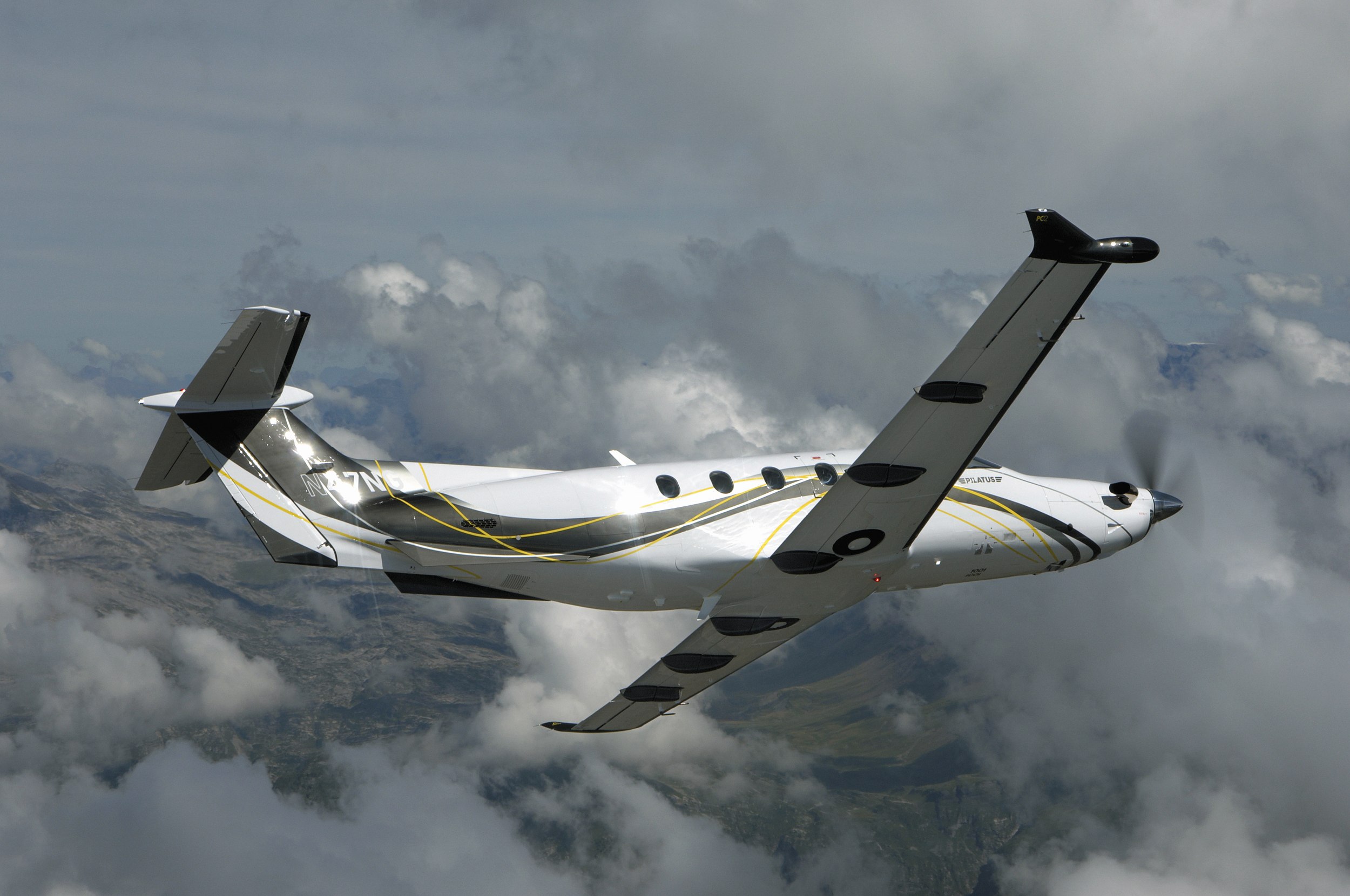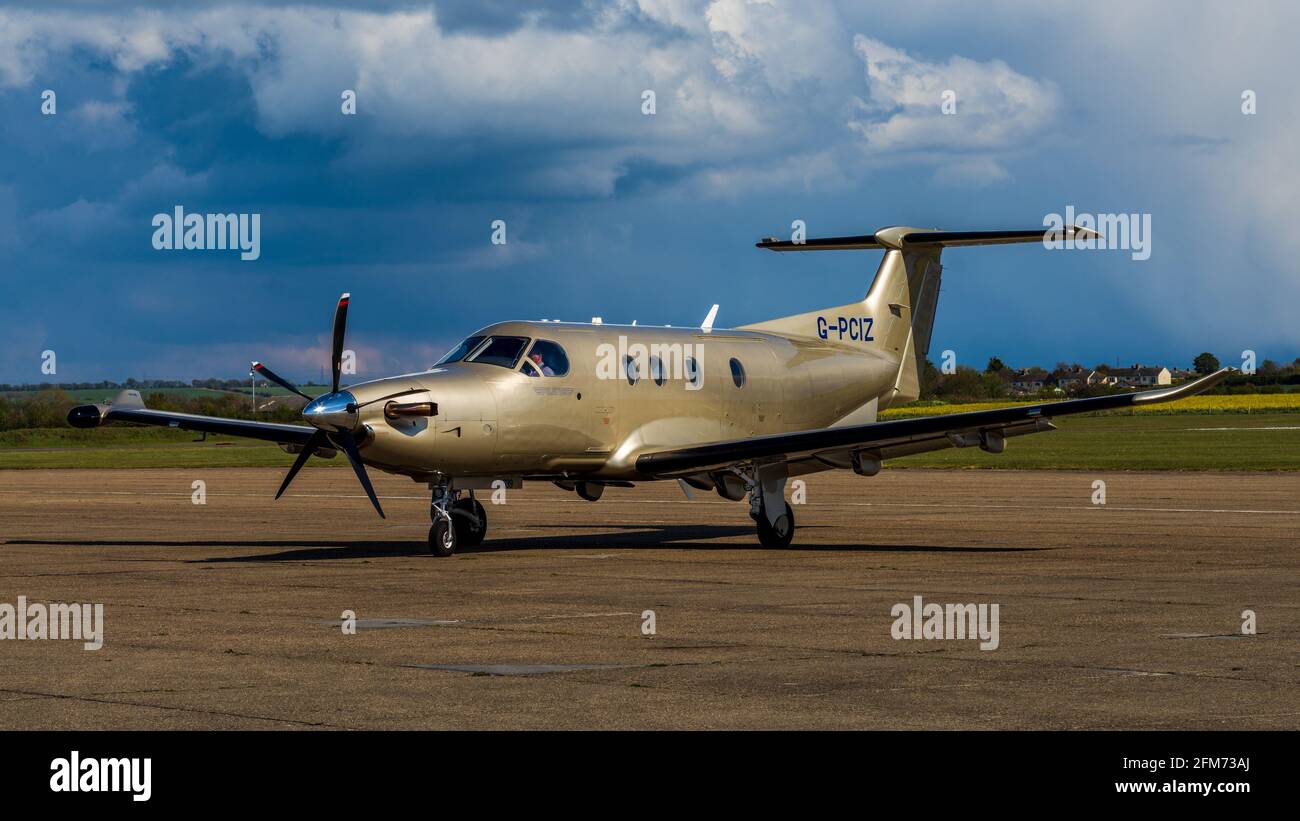Pc 12 Aircraft - You are here: Home 1 / Article Archives 2 / John's Blog 3 / What's Up With Pilatus PC-12 Pilots?
Many pilots laughed when an obscure Swiss company presented a large single-engine turboprop model at the 1989 NBAA show in Atlanta. Sure, it took five years to confirm Pilatus PC-12, but since then the skeptics have all but disappeared. With nearly 2,000 deliveries over the past 28 years, the "Turbine Subway" has earned a loyal following for its unique combination of large cabin size, long range and efficient runways.
Pc 12 Aircraft

Aside from features, another major reason for the PC-12's popularity is its stellar safety record, one of the best in all of general aviation. So everyone is trying to answer the question, "What is wrong with the Pilatus PC-12 pilots?" Should start: Not much. But incidents do happen, including a recent one off the coast of North Carolina that killed eight people on their way home from a hunting trip, making headlines and shaking the local community.
Pc 12 Soundproofing Kit Aproved
As we usually see in this series of articles, the cause of such accidents usually has more to do with the pilot than the plane (hence the last word in the title). This means it's worth our time to check the safety documentation of a specific aircraft type, even if you don't fly that model. Here are lessons for all pilots.
As usual, we start with the numbers and limit ourselves to fatal incidents in North America. This keeps the data clean and keeps us focused on the most critical events.
A search of the NTSB database shows very few incidents: just five in the last 10 years. (There was a fatal accident in 2017 with a U-28A, the military version of the PC-12, but I'm excluding that due to the unique nature of their operations.) With nearly 1,300 PC-12 flights in North America, it This means that only 0.38% of the relevant fleet was involved in a fatal accident during this period. In fact, there was a period of more than four years (January 2013 to April 2017) when there were no fatal PC-12 accidents – an incredible feat considering the number of flight hours this aircraft had. Often in challenges.
By comparison, the TBM series of single-engine turboprops has had seven fatalities over the past decade. When spread over the small fleet of 800 aircraft in North America, it comes to 0.88%, which is still very good but more than double the Pilatus figure.
Pilatus Sales And Service Center Pc 12 Pc 24
Besides fleet size, another popular way of assessing safety is the number of fatalities per 100,000 flight hours. This number can vary dramatically based on the estimated flight hours, which is often not much more than the estimate, but in this case it is worth considering. Turbine aircraft manufacturers track flight hours more precisely than piston OEMs, so the denominator here is more accurate. For this calculation, we will use all global accidents.
Since the first delivery of the PC-12 there have been only 22 fatalities worldwide (including the military), during which time the aircraft has accumulated nearly 9 million flight hours. Doing some quick math puts the fatality rate at 0.24 per 100,000 hours, and probably lower only for US drivers. This compares favorably with the overall TBM life cycle or GA mortality rate of about 1.1, which was 1.02 in 2019 (for non-commercial fixed wings).
At first glance, the low number might mean it's tied to PC-12, but every death is a tragedy so it's worth examining the details to see if there are common themes. Let's take a quick look at all five of the deadliest incidents of the last decade.

Lake Wales, Florida. A novice PC-12 pilot was in IMC at 25,000 feet when he began a right turn to avoid possible weather. During the go-around, the autopilot disengaged for unknown reasons - possibly due to a malfunction, possibly due to the aircraft slowing down too much, or possibly due to a simple error. Instead of flying the plane, the pilot tried to retest the autopilot (possibly to correct the error) and lost control in the process. The bank angle exceeds 70 degrees and the airspeed past the redline increases to 175 knots. The pilot eventually attempted to recover but clipped the wings during the dive and the aircraft disintegrated mid-flight.
Pilatus Pc12 Makes Flying Easy
Burlington, North Carolina. A professional pilot was flying laboratory samples at night and in cloud at 3,000 feet, when ATC asked him to reset his transponder code. Shortly after, the pilot lost control and crashed. The NTSB report points to possible confusion about the automatic mode — there's a scenario where it might be involved but actually isn't — but it's impossible to know for sure. The end result was a classic spatial anomaly crash.
Amarillo, Texas Air Ambulance Pilot with two crew in an airplane on an IFR flight at night with a 700-foot ceiling and moderate turbulence. At 800 feet AGL, the air traffic controller asked the pilot to reset his transponder, which he did, but then the aircraft made a false pitch and roll change, including a rapid climb (6000 ft/min). About a minute later, PC-12 crashed in a rapid descent.
Chamberlain, South Dakota. The plane, with 12 people on board, crashed shortly after takeoff, probably due to a stall - the airspeed never exceeded 100 knots and the altitude never exceeded 500 feet. The weather was bad, with low cloud cover and half a mile of visibility, and the plane was sitting outside for the night. The pilot and a passenger arrived early in the morning to clear the snow and apparently spent at least a few hours doing so. The NTSB report is still preliminary, but the crash has all the hallmarks of a low-level stall/spin, possibly exacerbated by contaminated flight control surfaces and possibly weight and balance issues.
Beaufort, North Carolina. The aircraft flew VFR for the 60-mile flight to Beaufort, but quickly contacted ATC for IFR clearance - the weather was slightly VFR over land and IFR was tight near the coast. After 3000 hours, the commander was sitting on the right seat of his student pilot son and there were six passengers behind him. After landing in a restricted area, the aircraft turned back, but was eventually cleared for RNAV 26's approach to MRH. Shortly after the initial attitude correction, the aircraft began making sudden changes in speed and altitude, lost control and crashed into the ocean. (This report is still preliminary.)
The Costs To Own And Operate A Pilatus Pc12
Before we draw any sweeping conclusions, we have to admit that we are going through some statistical noise. Five accidents in millions of flight hours is not a lot to go by. However, there are some trends that are easily recognized.
First, look at what you don't see here: engine failures. This was a major concern when the PC-12 was first introduced, and many King Air pilots turned up their noses at the thought of a 10,000-lb. The plane has only one engine. And yet it is clearly not a significant risk. In fact, there were occasional engine problems, including some stalling in flight, but new fuel controls in the early 2000s solved the few problems that appeared. Still, the record is impressive: there has never been a PC-12 fatality in the United States due to engine failure. There are many reasons why the Pratt & Whitney PT6 engine has incredible reliability, the good gliding characteristics of the Pilates wing and a simple fuel system that is resistant to pilot error.
On the other hand, air seems to be a common thread. All five casualties occurred in actual IMC and two were at night. This is important, given that most of the time the aircraft is in VMC and during the day. It is worth noting that - no matter how capable the aircraft - flying in low IFR conditions or at night carries additional risks. We have to be on our game as pilots for these flights.

A third issue, perhaps related to the previous one, is that each incident involved one pilot (except for the student pilot in the correct seat for the Beaufort crash). This is not unusual for the PC-12, with the vast majority flown by the owner or a single professional pilot, but an aircraft with this complex skill set. If something goes wrong—an equipment malfunction, a bad transponder code, or a momentary disturbance—a single pilot can quickly become overwhelmed. Especially for bad weather or long days, it may be worth having a second pilot in the right seat.
Pilatus Dedicates Completions Center In Broomfield
This is especially true for less experienced pilots, and these incidents prove once again that the key number to follow is timing. No matter how many hours you've logged, aircraft like the Pilatus have a learning curve that can only be overcome with relevant experience - preferably on the same model with the same avionics. (Note that the incidents here do not indicate any difference in safety records between "pro pilots" and "owner pilots".)
The pilot at Lake Wales was particularly inexperienced, with less than 30 hours of sortie and this later
Pilatus pc-12 aircraft, 12 volt aircraft landing lights, rv 12 aircraft for sale, pc 24 aircraft, rv 12 aircraft, pilatus pc 12 aircraft for sale, pc aircraft, pc-12 ng aircraft, pc 12 aircraft for sale, aircraft joystick for pc, pc 12 aircraft specifications, pc 12 aircraft pictures
Post A Comment:
0 comments so far,add yours